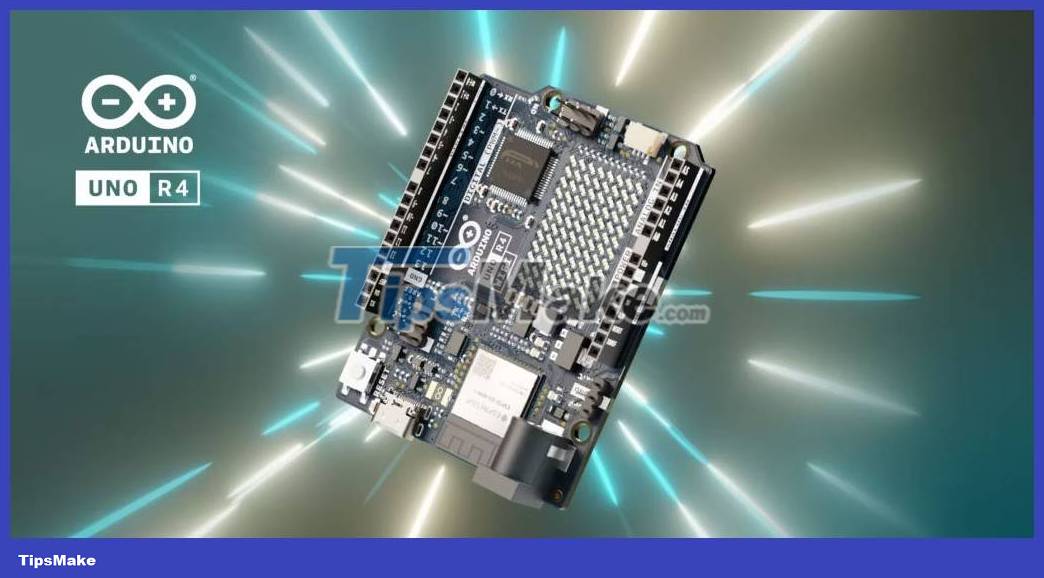Why is the new Arduino Uno R4 a game changer for manufacturers?
Arduino, an open source platform that has been loved by hobbyists and manufacturers for over a decade, recently launched the newest option for the Uno series, the Arduino Uno R4. Building on top of its predecessor R3 that's been around since 2010, this new version is poised to change things up for manufacturers.
Featuring a brand new SoC from Renesas, the Uno R4 is a game changer with the potential to change the way you will handle complex projects. But why is this new 32-bit RA4-series MCU about to shake things up?
Arduino Uno R4 has more powerful processor
If you've been using the Arduino platform for a while, you know there are different types of Arduino microcontrollers, with different capabilities and connections. With all the hardware upgrades announced for the Uno R4, it is very likely that it will become the Arduino board for manufacturers.
Most notable is the powerful Renesas RA4M1 (32-bit Arm Cortex-M4) processor operating at an impressive 48MHz. This represents a significant 3 to 16x increase in processing power compared to the Uno R3. All in all, Cortex M4 offers high performance with fast clock speed and more advanced instruction set, allowing for more efficient and faster code execution than the previous 8-bit AVR MCU on Uno R3.
Compared to smaller microcontroller boards like Raspberry Pi Pico with Cortex M0+, the performance of Cortex-M4 is about 6 times better.
The R4 feels similar to the Arduino Zero, with a similar form factor but with a better processor.
Memory Upgraded

With faster clock speeds and expanded memory, you can say goodbye to those moments of wondering why your code isn't working, only to discover that it's because your Serial.print() statements are too verbose for a sluggish MCU or your huge array has taken up all of the available memory.
In addition, the Arduino Uno R4 benefits from greatly expanded SRAM (32kB vs 2kB on R3) and flash memory (256kb vs 32kB), allowing you to create more feature-rich projects.
Hardware overhaul
The new board delivers many of the required hardware enhancements in a similarly compact form factor to enable compatibility with existing shields and components. Enhanced integrated components let you do what was only possible with custom boards before.
USB-C and Vin compatibility

The Uno R4 has a USB-C port for powering and programming with a computer, which is a significant upgrade over the previous USB-B port. The trend of having USB-C ports on Arduino boards was driven by the manufacturer community, which led to this upgrade. In addition, the Uno R4 supports 24 volts on Vin, making it compatible with a wider range of power supplies.
CAN bus
Known for its use in embedded systems, the CAN bus (Controller Area Network) allows you to minimize wiring and perform multiple tasks in parallel by connecting multiple shields. Together with the SPI (Serial Peripheral Interface) port, this will allow for more efficient communication between the different components of the project.
Improved Digital to Analog Converter (DAC)
The Uno R4 includes a 12-bit analog DAC, providing enhanced precision for analog output. Your projects that require precision for analog signals, such as sensor interfaces and motor control, are now upgraded.
HID device
Most modern development boards include HID (Human Interface Device) capability, which the Uno R4 has built-in, while previous Uno models did not.
You can use the keyboard/mouse API built into the core to convert your board to a HID. You can check out the documentation for this API to learn more about how it works.
Onboard WiFi module

You can choose one of two versions: Uno R4 WiFi and Uno R4 Minima. The WiFi version has an Espressif S3 WiFi module, which is ideal for IoT projects or any other project that requires wireless connectivity.
Compared to the Minima model, the Uno R4 WiFi variant has the following additional features:
- The ability to connect via and , support for IoT projects in the cloud and remote control.
- 12x8 LED matrix for creative ideas related to animation.
- Qwiic connector for rapid prototyping over I2C using compatible modules.
- The built-in mechanism can detect and prevent errors like division by zero and interpret them on the serial monitor.
The Uno R4 Minima, on the other hand, offers a cost-effective option for those who specifically need the power of a new microcontroller without the need for additional connectivity features.
Software compatibility and early adoption programs
While the new hardware upgrades are impressive, the software compatibility of the Uno R4 is equally important. Arduino has previously implemented an Early Adopter Program to address any software incompatibilities that may arise as a result of the move to an Arm-based 32-bit processor. Libraries and examples written specifically in the Arduino language will work seamlessly with the new board. However, libraries that are optimized for a particular processor or architecture may need porting.
Fortunately, Arduino is making the Uno R4 board available for free to developers who want to update their library for the new board. This support from Arduino ensures that the vast library of shields, instructions and code developed for the Uno R3 will continue to be available for the new board.
 How to use the advanced options of Raspberry Pi Imager
How to use the advanced options of Raspberry Pi Imager How to send backup copies of Raspberry Pi files to email
How to send backup copies of Raspberry Pi files to email Raspberry Pi Foundation introduces Code Editor, a simple and useful online code editing tool
Raspberry Pi Foundation introduces Code Editor, a simple and useful online code editing tool 9 types of servers that can be hosted on Raspberry Pi
9 types of servers that can be hosted on Raspberry Pi Comparing Odroid-N2+ and Raspberry Pi 4: Which option offers better value?
Comparing Odroid-N2+ and Raspberry Pi 4: Which option offers better value? Should I buy Rock 5 or Raspberry Pi 4?
Should I buy Rock 5 or Raspberry Pi 4?